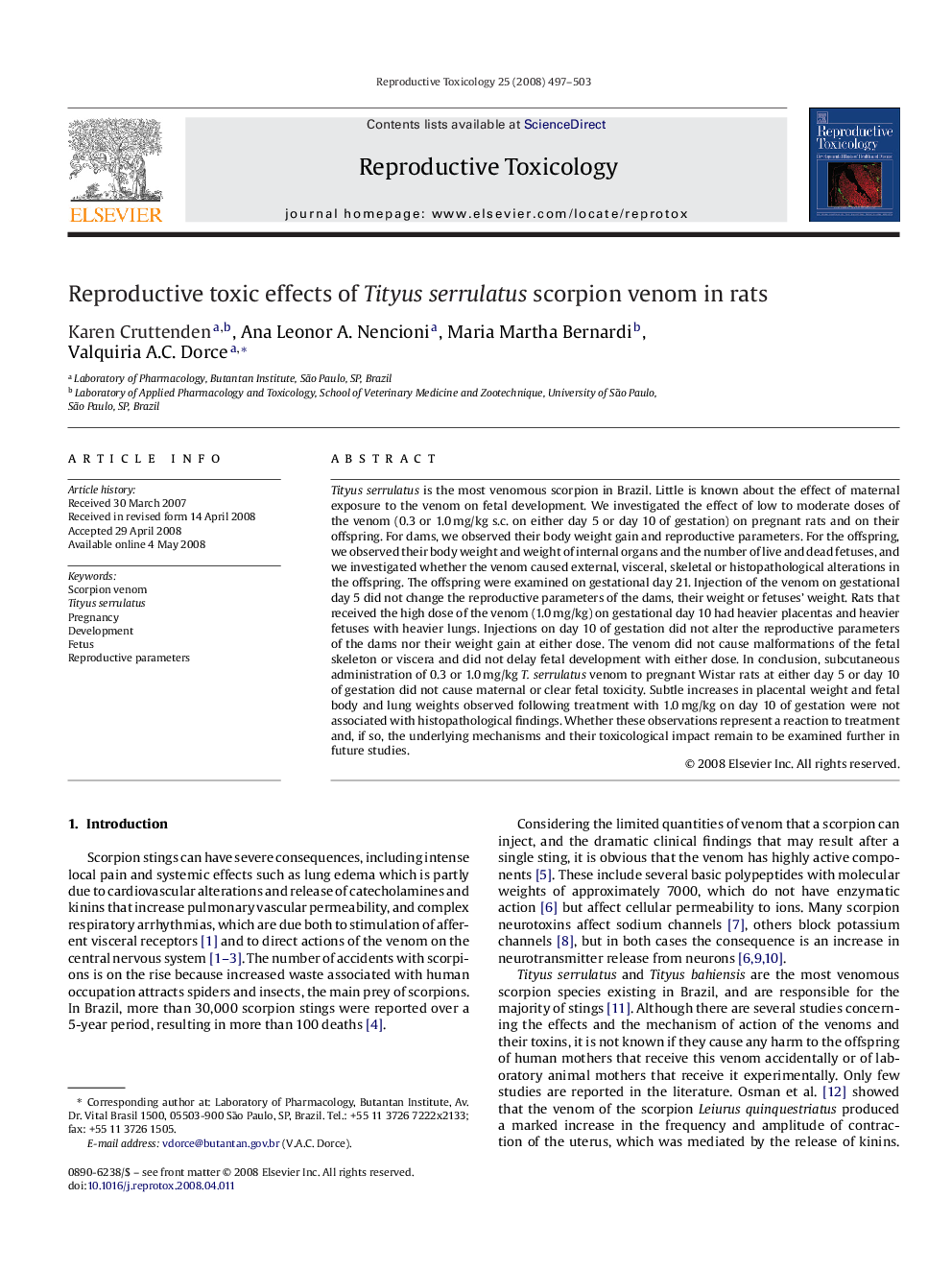| کد مقاله | کد نشریه | سال انتشار | مقاله انگلیسی | نسخه تمام متن |
|---|---|---|---|---|
| 2595191 | 1132297 | 2008 | 7 صفحه PDF | دانلود رایگان |

Tityus serrulatus is the most venomous scorpion in Brazil. Little is known about the effect of maternal exposure to the venom on fetal development. We investigated the effect of low to moderate doses of the venom (0.3 or 1.0 mg/kg s.c. on either day 5 or day 10 of gestation) on pregnant rats and on their offspring. For dams, we observed their body weight gain and reproductive parameters. For the offspring, we observed their body weight and weight of internal organs and the number of live and dead fetuses, and we investigated whether the venom caused external, visceral, skeletal or histopathological alterations in the offspring. The offspring were examined on gestational day 21. Injection of the venom on gestational day 5 did not change the reproductive parameters of the dams, their weight or fetuses’ weight. Rats that received the high dose of the venom (1.0 mg/kg) on gestational day 10 had heavier placentas and heavier fetuses with heavier lungs. Injections on day 10 of gestation did not alter the reproductive parameters of the dams nor their weight gain at either dose. The venom did not cause malformations of the fetal skeleton or viscera and did not delay fetal development with either dose. In conclusion, subcutaneous administration of 0.3 or 1.0 mg/kg T. serrulatus venom to pregnant Wistar rats at either day 5 or day 10 of gestation did not cause maternal or clear fetal toxicity. Subtle increases in placental weight and fetal body and lung weights observed following treatment with 1.0 mg/kg on day 10 of gestation were not associated with histopathological findings. Whether these observations represent a reaction to treatment and, if so, the underlying mechanisms and their toxicological impact remain to be examined further in future studies.
Journal: Reproductive Toxicology - Volume 25, Issue 4, August 2008, Pages 497–503